
Hi Gang…
I’ve been exploring the early years of Devin’s “car life” lately on Forgotten Fiberglass. How many of you have heard of the “Type S” or “Sports” model – designed by Murray Nichols for Bill Devin? He offered it before the famous Devin body that we’re all familiar with, and it was available at the same time as his “Type C” or “Competition” body was available which we now call the “Devin-Panhard” sports car.
Some of you Devin aficionados out there may want to comment with additional detail about this story below. Just use the new “Comment” feature at the end of our article to do so. We welcome all comments, additions and contributions.
In fact, we are looking to find a Devin contributor out there who is willing to contribute articles along the “Devin” line of interest and history. Any takers out there gang? Wouldn’t you like to hear from others than just me? I certainly would – and it would help our research effort quite a bit – so send me an e-mail if you’re interested.
And now…without further adieu, let’s present the Devin article from 1955. Let’s dig in gang!
Devin’s Twin Devils (Road & Track, January 1955)
The Type C For All-Out Competition
The Type S For Dual Sports Usage
Photographs by Rolofson
Spectators at early California sports car events will remember a much-modified Crosley Hot Shot driven by one Bill Devin. The Crosley has long since gone, for Bill Devin went on to bigger and better machinery from Italy. Those, too, were eventually sold, and now Devin Industries, Inc., 16648 Seville Street, Fontana, California are offering a pair of smaller class sports cars for the enthusiast who wants to get into real competition for a modest outlay.
As shown here, there are two models, the C type competition body, styled along the lines of the French Deutsch-Bonnet and the S type sports model, designed by Murray Nichols. Both bodies are made of fiberglass and mount on an 84 inch wheelbase chassis.
The chassis frame is a special unit designed by Devin Industries, but standard Dyna-Panhard components bolt-on, including the complete rear suspension and the famous flat-twin front wheel drive “package” in front. The frame is composed of a pair of box section rails, reinforced by a tubular truss structure and weighs only 80 lbs.
The Dyna-Panhard engine is available in 745 or 850 cc sizes, either blown or unblown. Thus there are actually 8 models available: the 750 C, the 850 C, the 750 CB, the 850 CB, the 750 S, the 850 S, the 750 SB, and the 850 SB. Quoted horsepower figures on these engines vary, for the DB firm in France has achieved remarkable results, both in power output and in actual performances on road and track. The stock 745cc engine gives 38 bhp at 5000 rpm, the 850cc unit achieves 42 bhp. Suitably modified engines may develop 20% more power, while the B models (blown) can offer up to a 40% gain.
Now let us look at the possibilities of bringing home a trophy. With a weight of just under 1000 lbs for the C type, just over that for the S type, classes G and H look most promising. Sports car races are not won on horsepower-to-weight ratio alone – but a favorable ratio helps!
Devin Industries will offer their two models complete and ready to go, or in kit form. You can buy just the frame, or a bare body shell. You can even have a hard-top on the S model, to make a high performance car that can be driven comfortably in any weather.
Prices? They vary with specifications but a complete machine won’t miss $2.25 per pound by very much.
Summary:
In the overhead shot of the Devin-Panhard (Type C) in this article, it looks like the famous Alfa Romeo Disco Volante to me. Click here to review the history of the Disco Volante. Devin’s Type S and Type C sports cars were both well-designed machines that captured the attention of sports car designers and builders back in the day. Little did they know that Devin would blow the doors off with his next sports car design and build – but that story’s for another day.
Hope you enjoyed the article, and until next time…
Glass on gang…
Geoff
——————————————————————-
Click on the Images Below to View Larger Pictures
——————————————————————-
- Caption: Side View Of TheDevin Fiberglass Type “C” Body.
- Caption: Access To Engine and Instruments is Excellent in the C Type Devin.
- Caption: The Prototype Devin-Panhard Type S Has One Door On The Left Side.
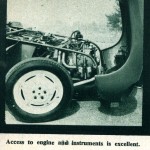
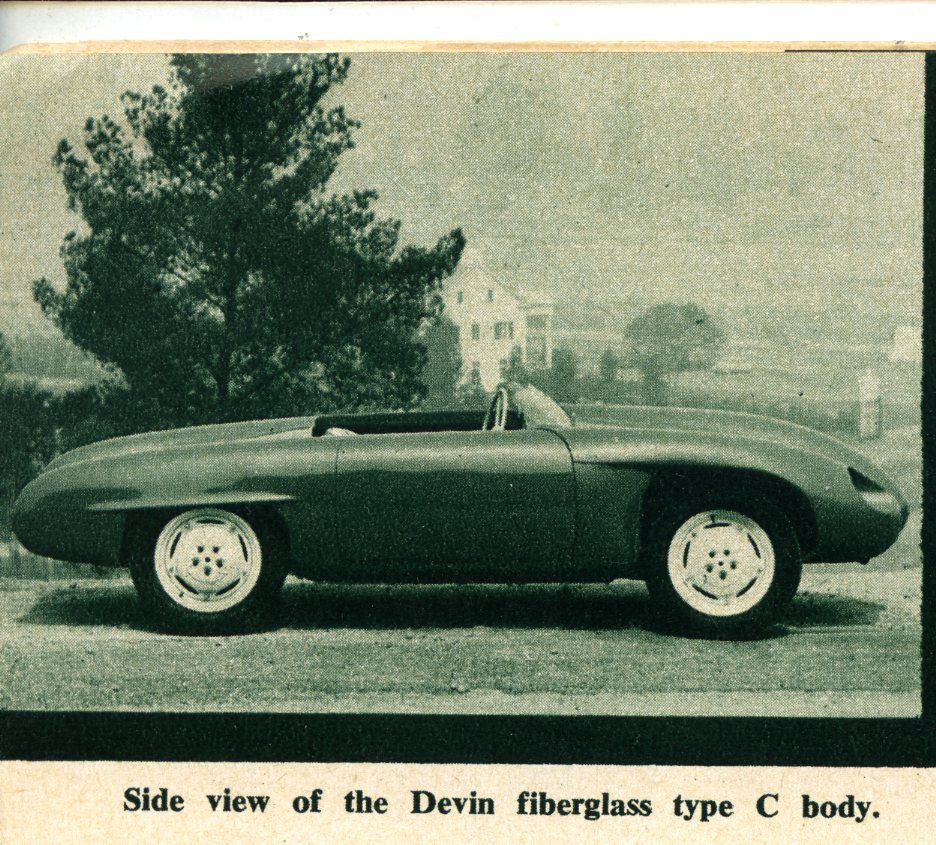
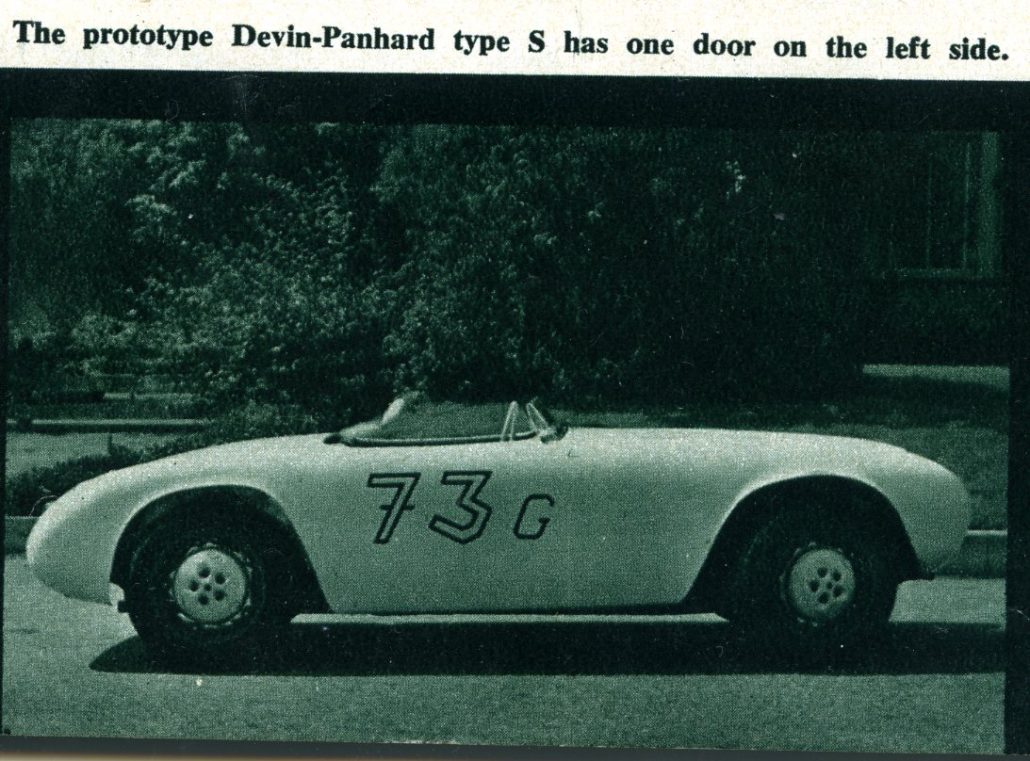




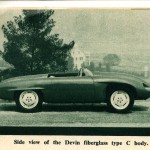
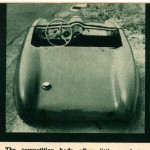
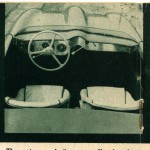
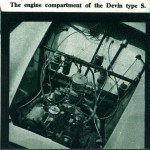
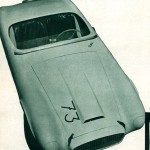
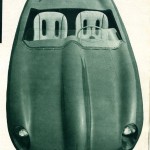
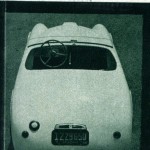
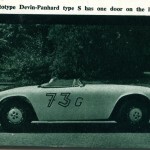
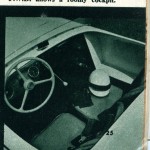

Hi Geoff,
I am Murray Nichols’ daughter. Harold Pace’s comment is correct in that my father built at least four, maybe five, cars in our garage in North Hollywood. To my knowledge, my father never worked for a car manufacturer who “forbade” him to design cars for pay. It is good to see the old photos of “#73.” It brings back happy memories to someone who was too young to drive when her dad was building cars, but was very into sports cars nonetheless. I have several photos of some of the cars dad built. They were revolutionary for their time.
Rosemary Newman
hello to Rosemary,
I am very interested in pictures you might have of your Father’s cars. As far as I know, only two of the 4-5 are currently
known to exist. Recently I have found another Panhard with a body similar to the Devin Panhard S design, but with a more
refined rear section. I would be excited to communicate on this topic.
Hi Geoff,
This was an odd article. Bill Devin explained it to me one night when I was visiting him to pick up my SS. He said he intended to offer the “S” body, which was designed by Murray Nichols, who built 4 specials (the first based on the same Panhard chassis as the first Devins). Devin and Nichols were set to build bodies when, according to Devin, Nichols’ employer (I THINK he said it was a car mfgr, or something like that) forbade him from designing other cars for pay. So the project “S” never came about.
Harold Pace
That “C-Type” is outtasight! It turns the revolutionary Jag E-Type into a mere copycat, front styling wise. Bob Doehler, one of the styling team for the Studebaker Avanti, was a good friend of mine. He had an unusual car collection. Some of his cars seemed to be weird choices, some downright ugly to my eyes. However, each was chosen from a designer’s perspective, based on the fact that they were the FIRST cars to embody a particular key styling aspect. My tour of his collection came about 35 years ago, and I wish I had taken notes. One of the elements that Bob went on and on about was the “eyebrows” (my word) over the wheel wells, such as those employed by the Mercedes sports cars of the ’50s-’60s and this Devin. I recall that he had touted several advantages to this design, including structural stiffness and control of air and water flow turbulance around the openings. My understanding of such intricasies was in its infancy at that time, but if you listen carefully to the experts, those seemingly unimportant (or strange and mystifying) things can become incremental improvements to your own design considerations, later. They add up, to become what Penske used to call “the racer’s edge”.